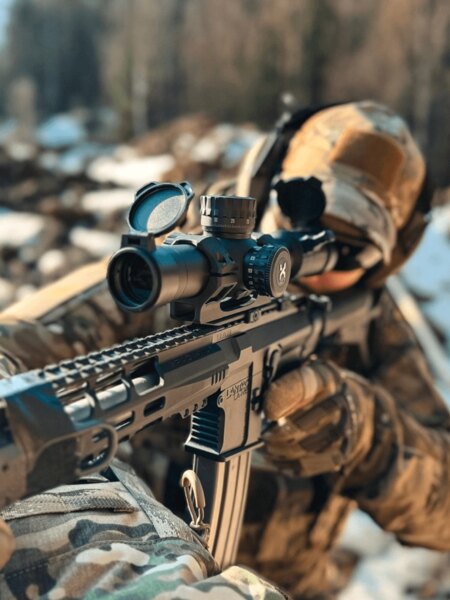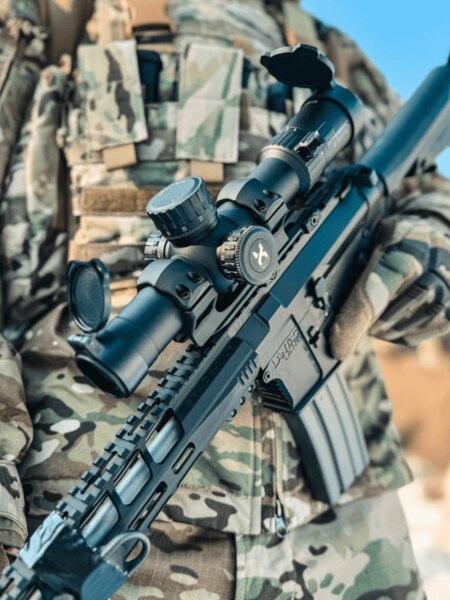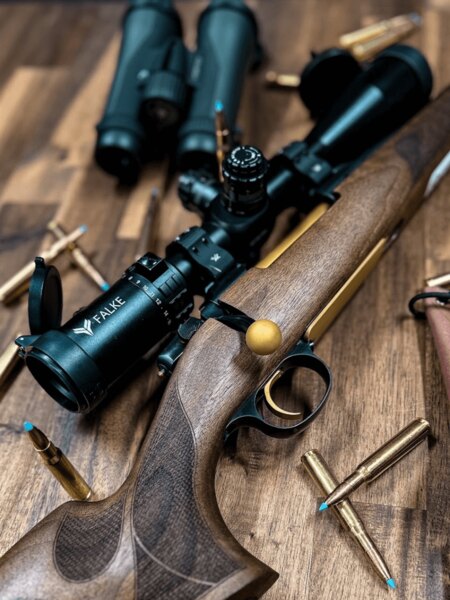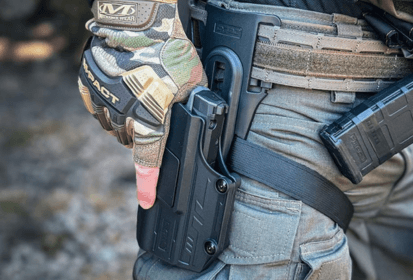What is MOA
- 1 MOA = 1/60 of a degree
- A full circle equals 21,600 MOA
- At 100 m ≈ 29.1 mm
- Anglo-Saxon approximation: 1 MOA ≈ 1″ at 100 yards (25.4 mm)
Riflescopes in MOA – common adjustments
- ¼ MOA ≈ 7.3 mm at 100 m
- ⅛ MOA ≈ 3.6 mm at 100 m
Whether you shoot recreationally, competitively, or professionally, sooner or later you’ll come across two key abbreviations – MOA and MRAD. These angular units play a fundamental role in optics because they determine how precisely you can measure and adjust your shot. But how do they differ, how do they convert, and how do you decide whether to go with a riflescope in MOA or MRAD?

Vortex Optics riflescope in practical use – delivering maximum accuracy and reliability even under demanding conditions.
Accurate angular measurement is absolutely essential in shooting—whether it’s estimating target distance, calculating a bullet’s ballistic curve, or making fine adjustments on a riflescope. Angular units allow us to translate distances and angles into specific numerical values. In practice, two systems are used most often:
🟢 MOA (Minute of Angle) – based on dividing a circle into degrees and minutes. Commonly used in the United States and in contexts where yards and inches are the standard units.
🟢 MRAD (Milliradian, or Mil) – derived from the radian, a purely mathematical angular unit. Thanks to its link to the metric system, it is more intuitive for European shooters and NATO militaries.
Both systems serve the same purpose: to describe the angle between the weapon and the target. They differ only in notation and practical application.

Close-up of a Vortex Optics riflescope on a modern tactical rifle – an ideal combination for both sport shooting and professional use.
| Property | MOA | MRAD |
|---|---|---|
| System | Minute of Angle (1/60°) | Milliradian (1/1000 rad) |
| Click precision | ¼ or ⅛ MOA (≈ 7.3 mm / 3.6 mm at 100 m) | 0.1 or 0.05 MRAD (10 mm / 5 mm at 100 m) |
| Units used | Inches, yards | Meters, centimeters |
| Tradition | USA, Anglo-Saxon world | Europe, NATO militaries |
| Advantage | Very fine adjustment (⅛ MOA) | Easier calculation in the decimal system |
| Disadvantage | Requires conversion to metric units | Slightly coarser step than ⅛ MOA |
Choosing between them is not complicated—it mostly depends on the environment you shoot in and what you’re accustomed to. If you’re in the U.S. or work with materials that use yards and inches, MOA will feel more natural. In Europe, where distances are measured in meters and centimeters, MRAD tends to make more sense since it directly follows the metric system and makes mental conversions faster.
In terms of precision, the difference between MOA and MRAD is negligible—modern optics allow fine adjustments in both. The biggest mistake is mixing systems. If you have a riflescope in MOA but ballistic charts or a rangefinder in MRAD, you’ll constantly have to convert, which increases the chance of error. The best approach is to stick to one system across your entire setup.

Falke riflescope mounted on a hunting rifle with a wooden stock, cartridges placed on the table. Photo: Rigad
MOA and MRAD are simply two different ways of measuring angles and adjusting a riflescope. Both systems have long traditions and work equally well in practice—the difference lies mainly in the units you work with. MOA suits those accustomed to inches and yards, while MRAD is more natural for anyone using the metric system.
The key is consistency: use the same system for your riflescope, ballistic tables, and rangefinder. By doing so, you’ll avoid unnecessary conversions and errors during shooting. If you follow this principle, you can be confident that whether you choose MOA or MRAD, your riflescope will allow accurate and reliable hits.

